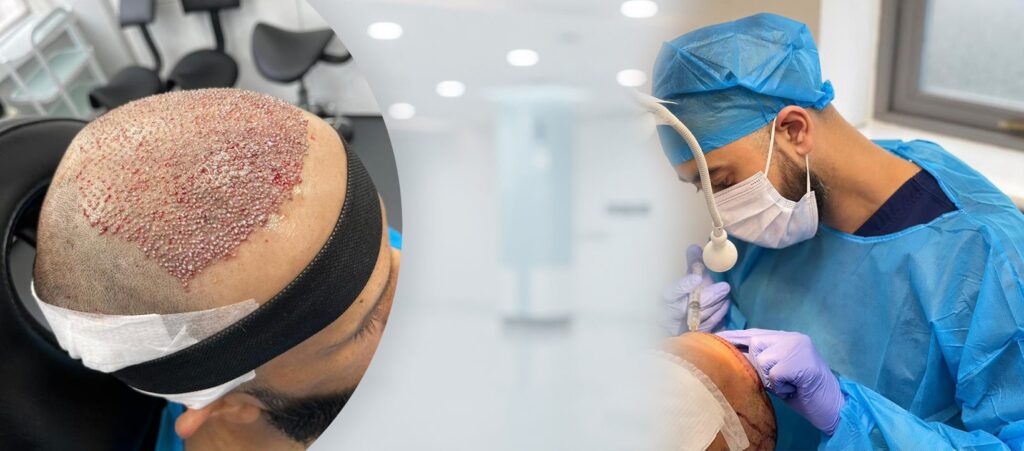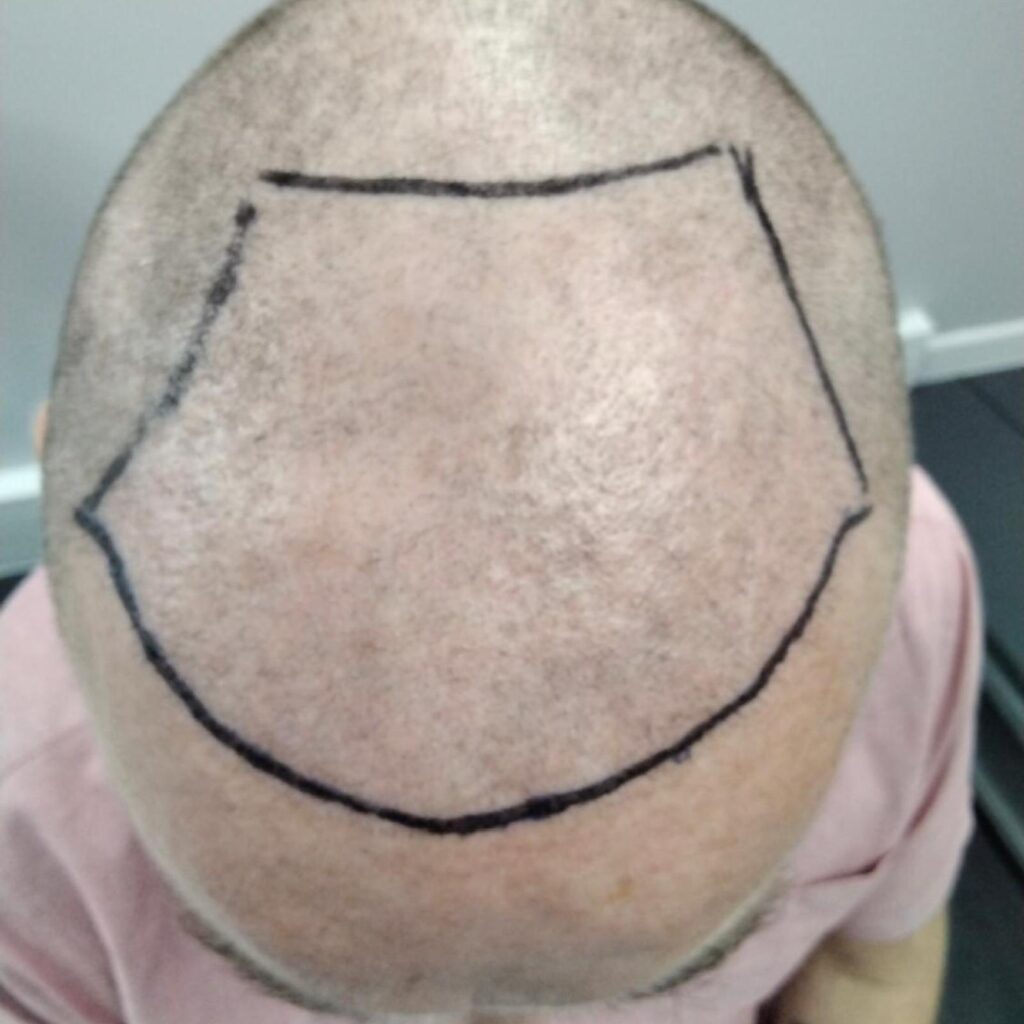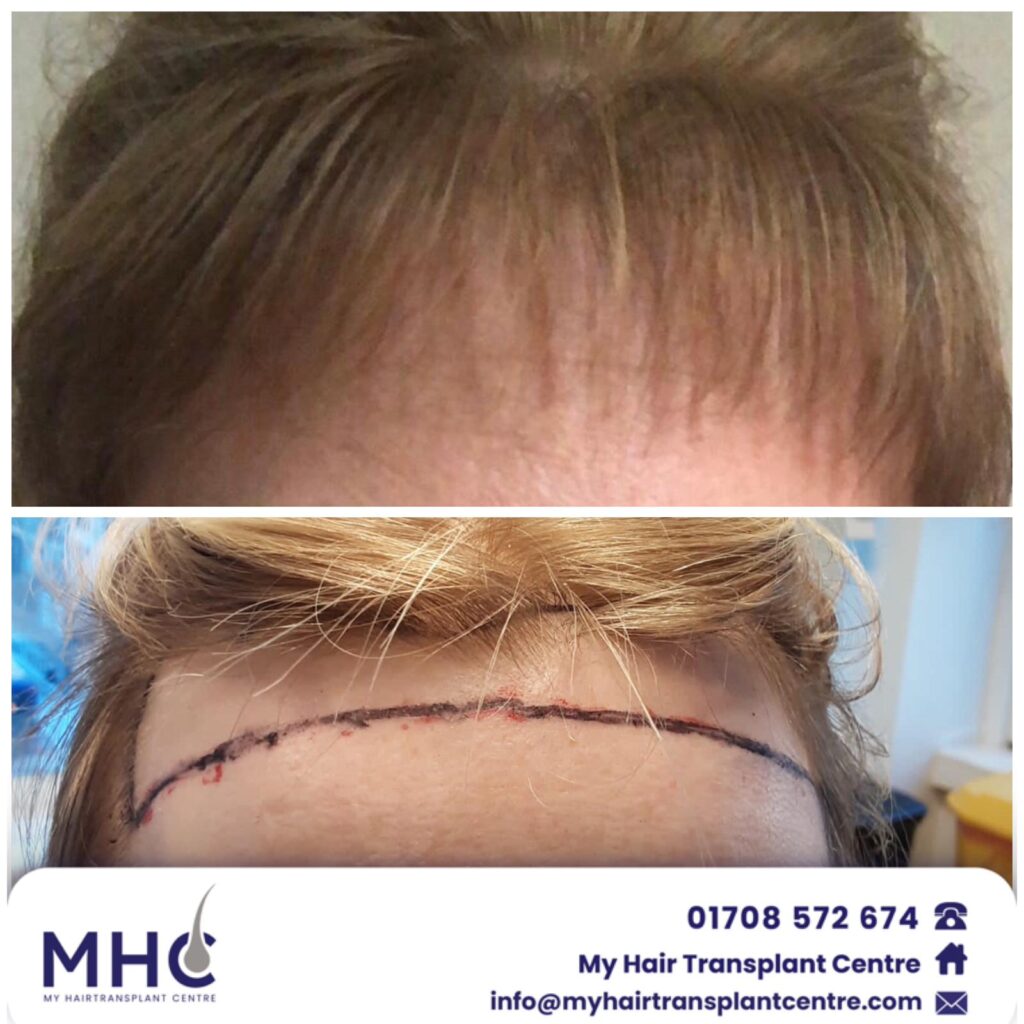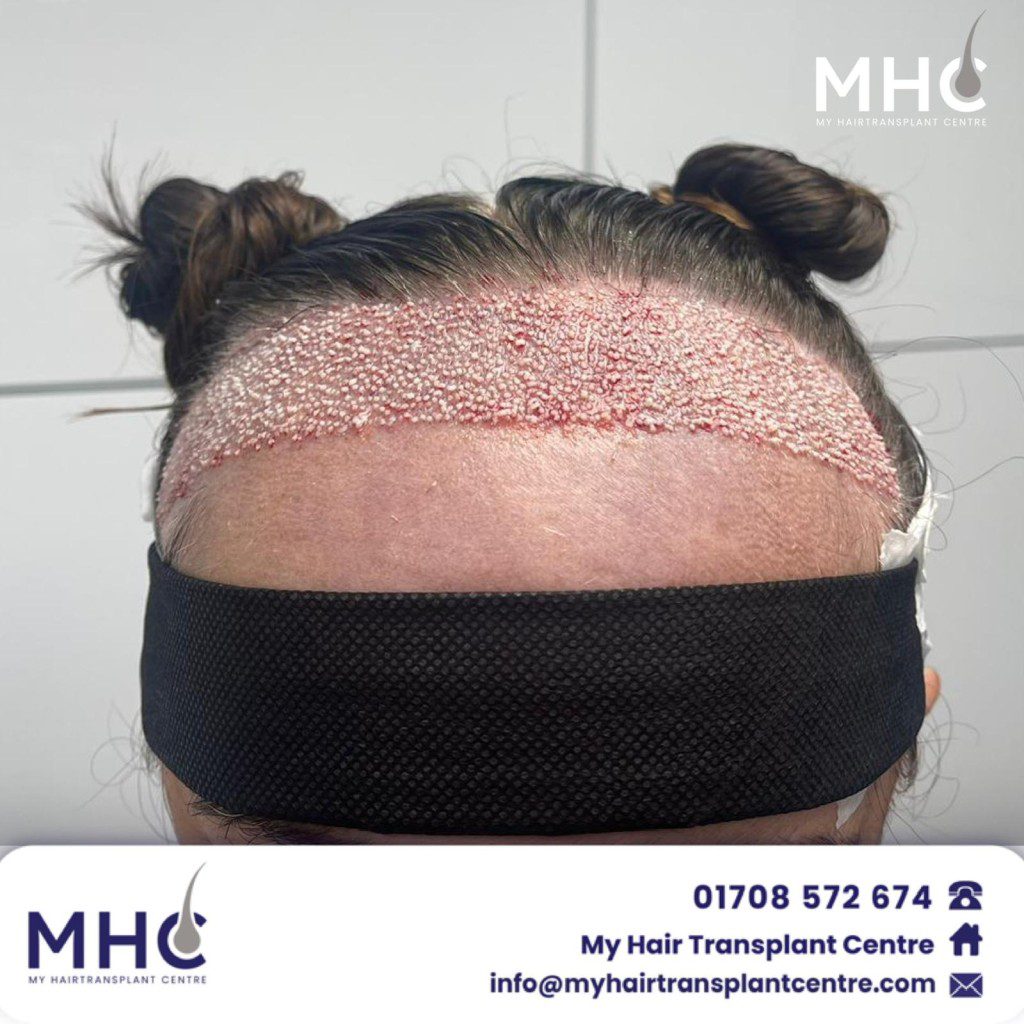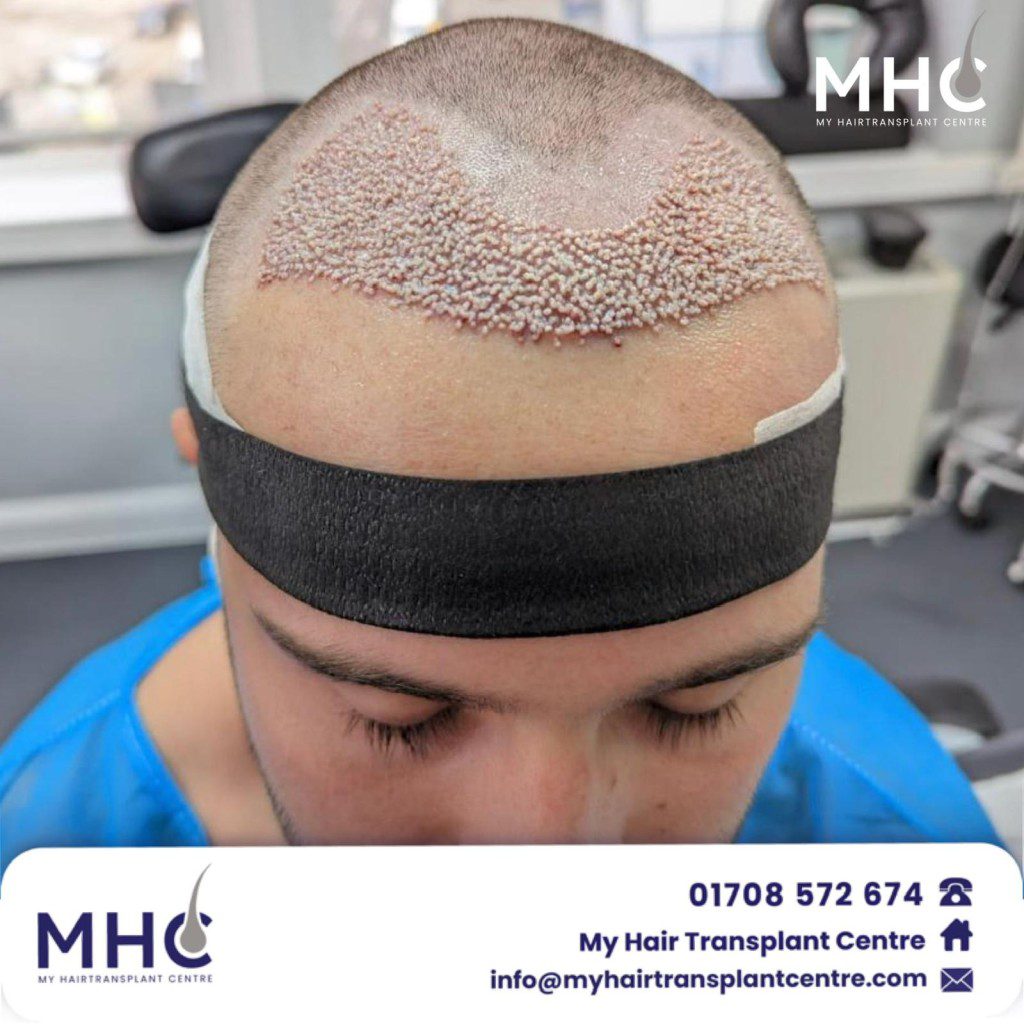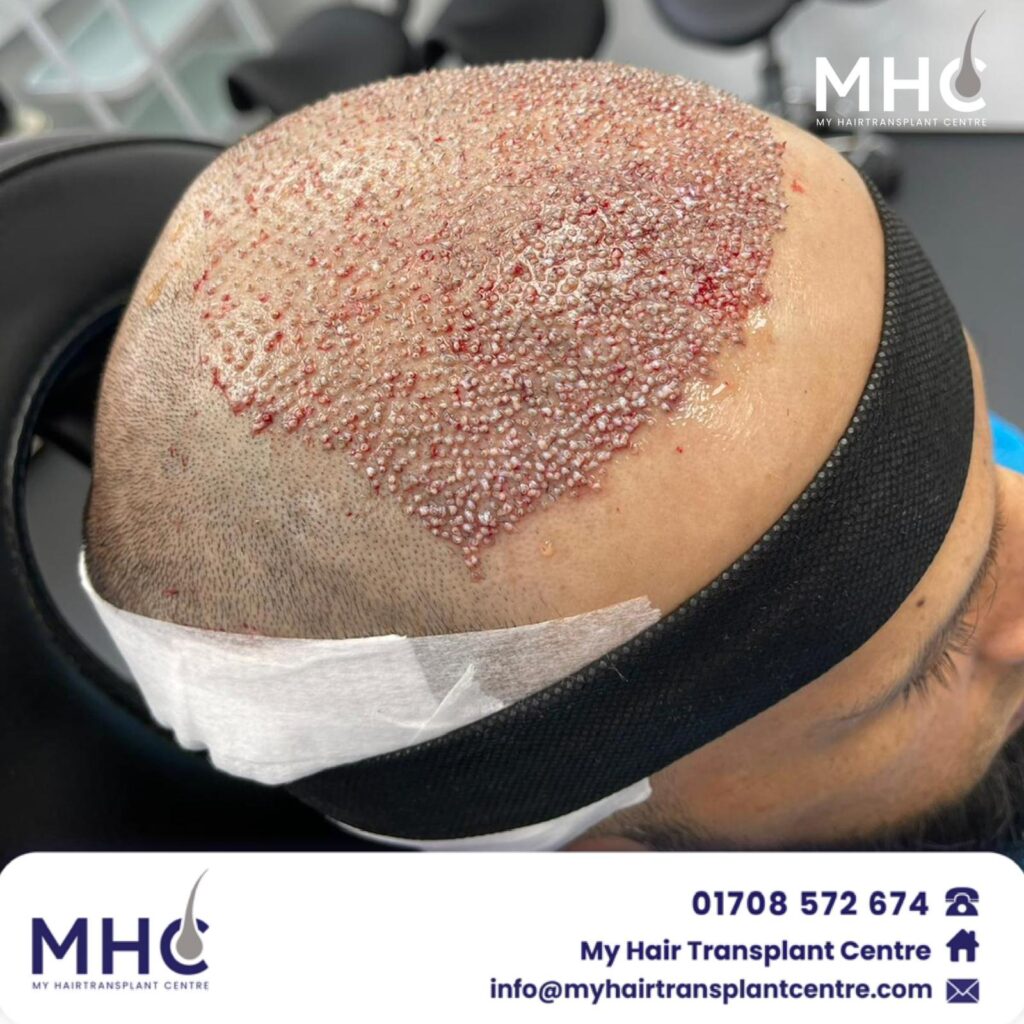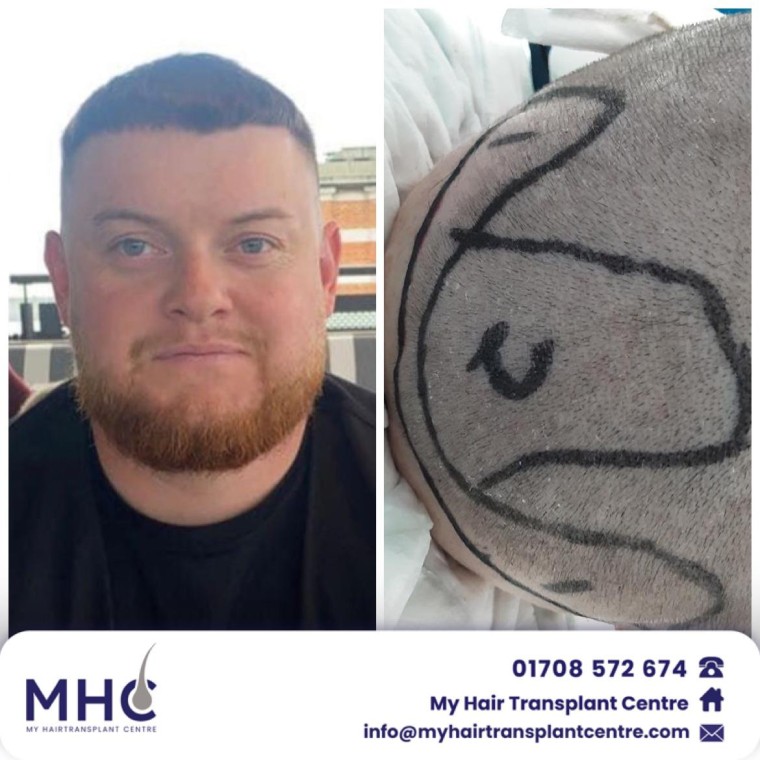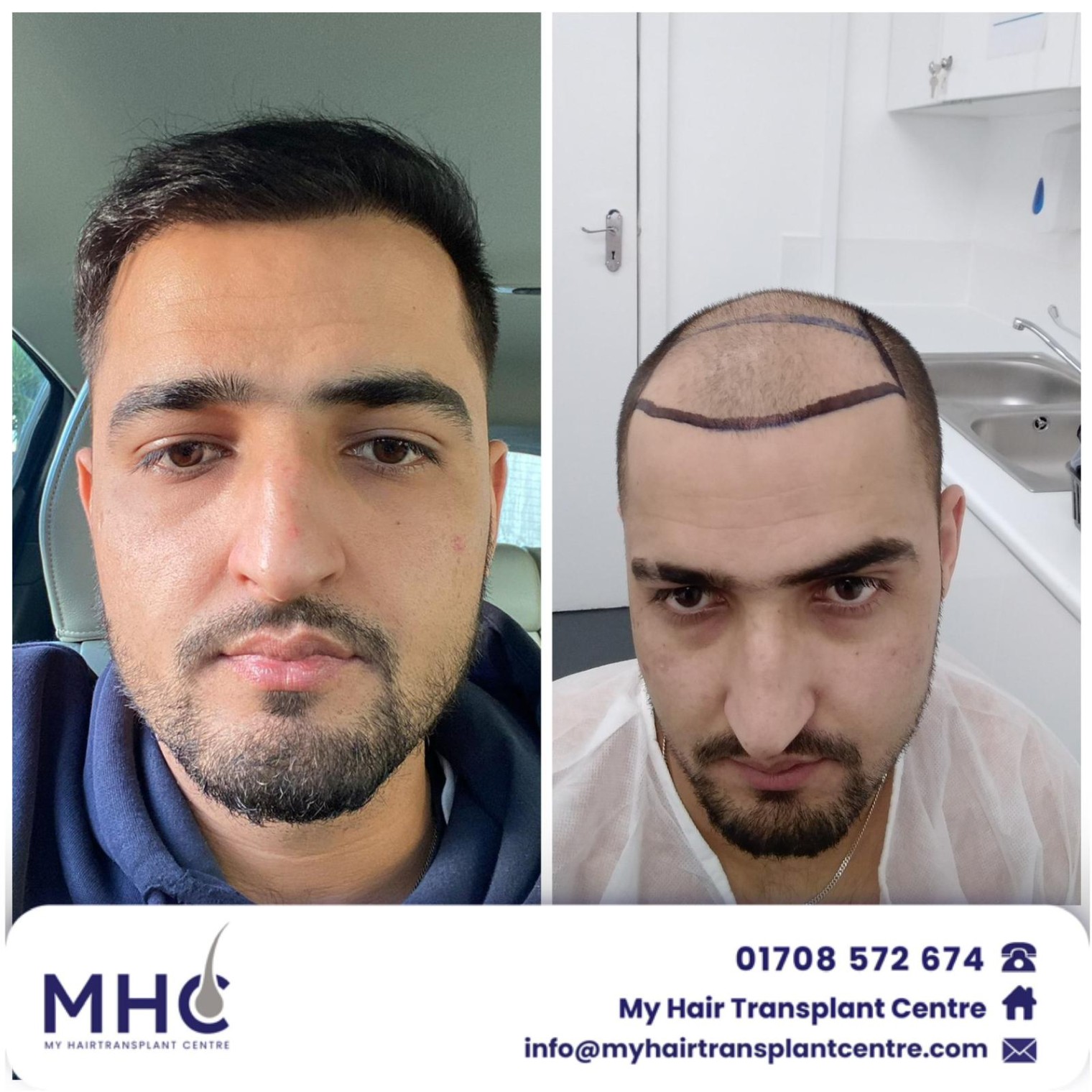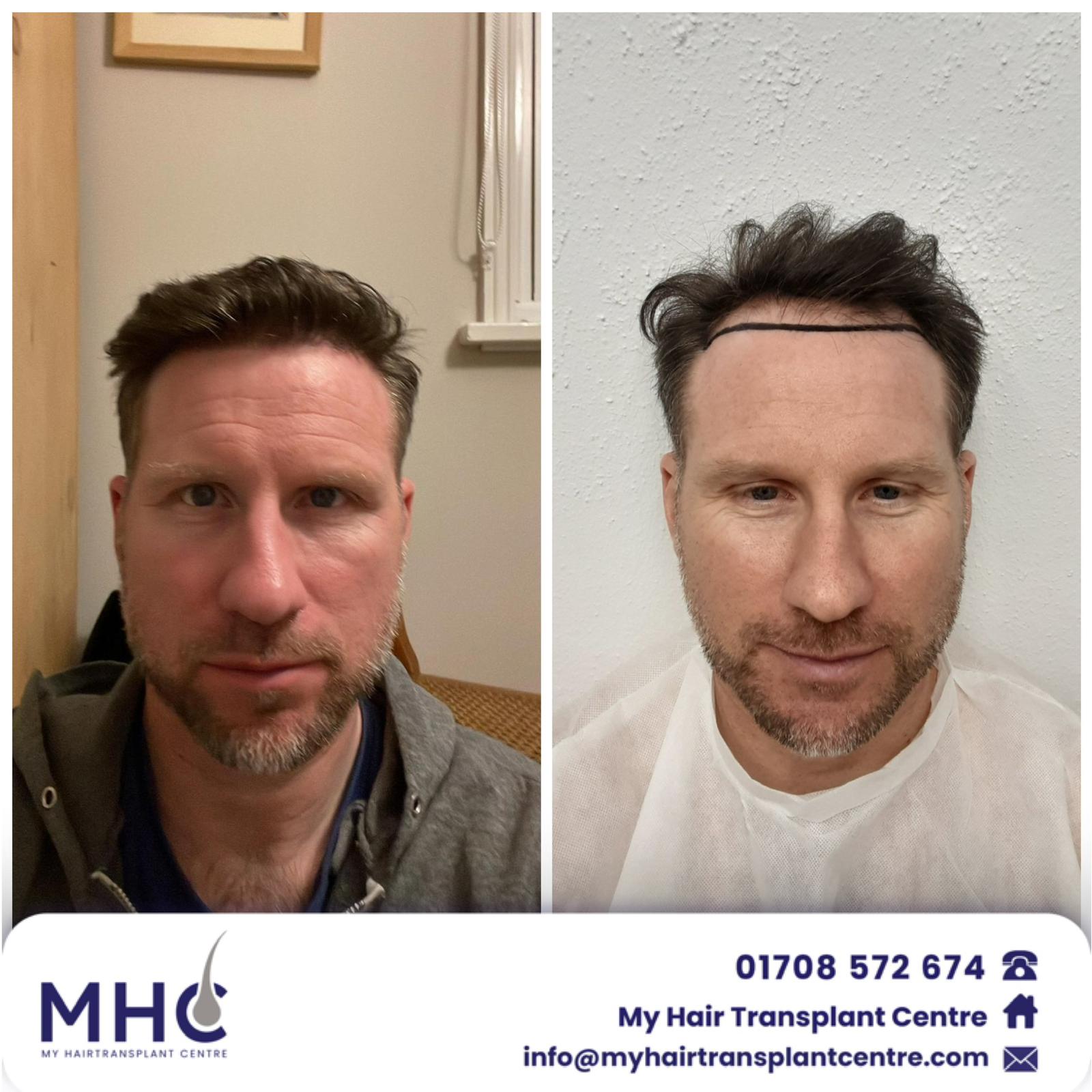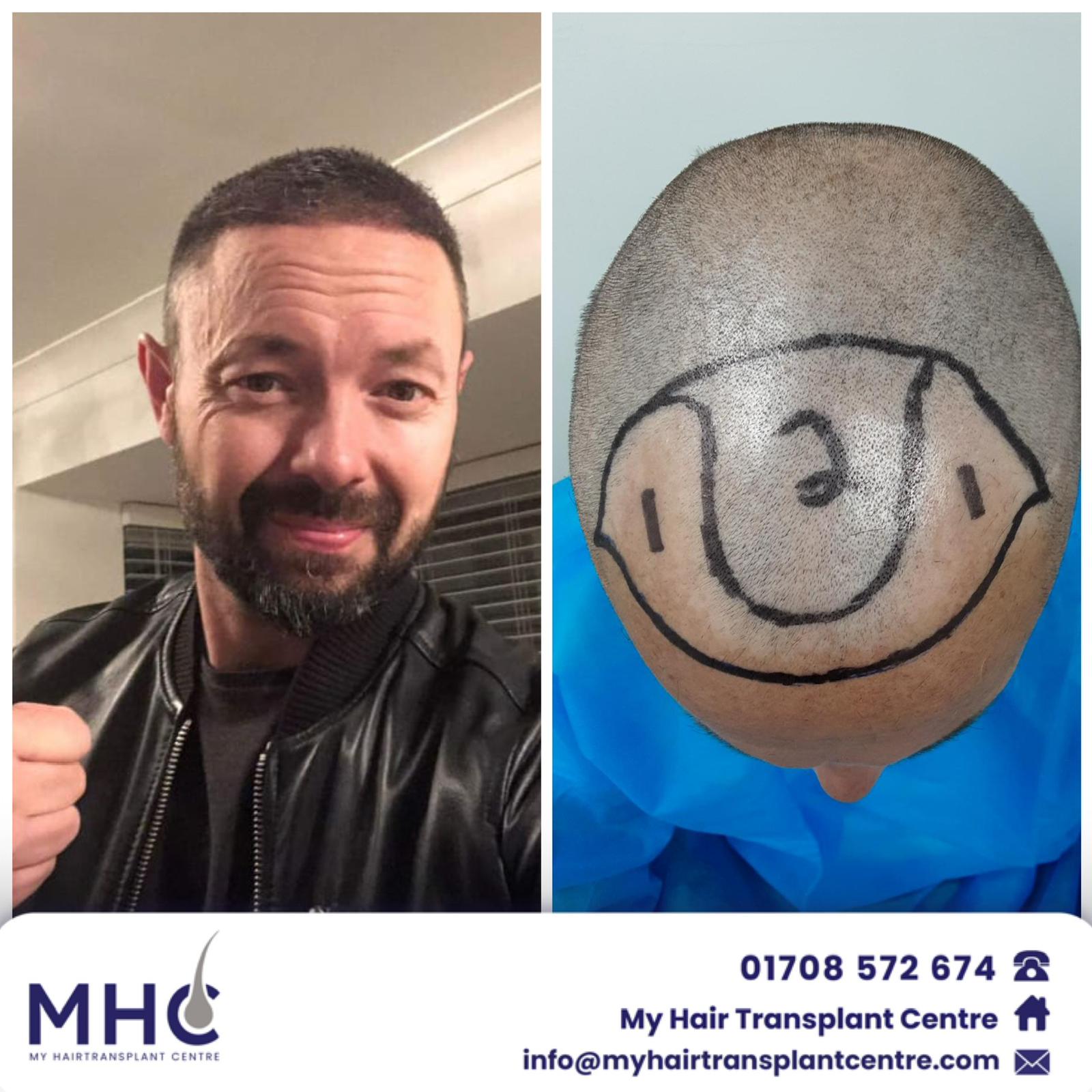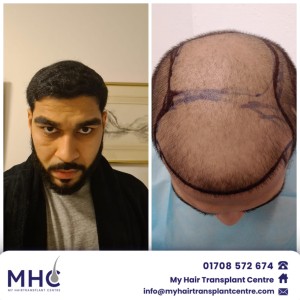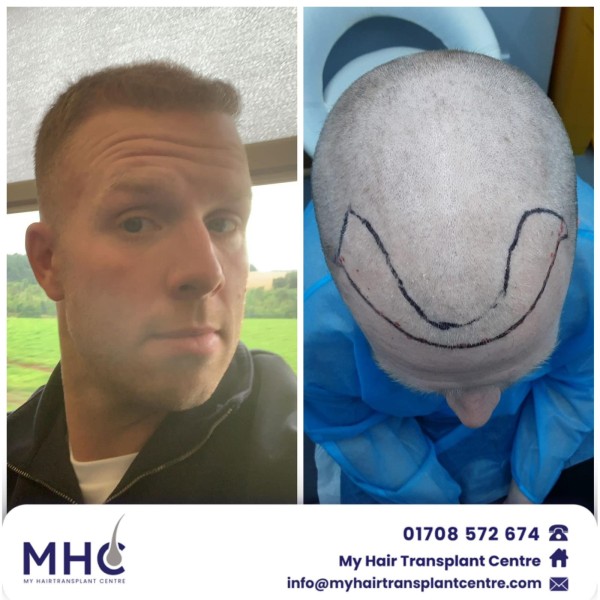FUE (Follicular Unit Extraction) hair transplant is a minimally invasive procedure used to restore hair growth. The procedure involves the removal of individual hair follicles from a donor area, typically the back or sides of the scalp, and transplanting them to a bald or thinning area.
Here’s an overview of the procedure:
- Consultation: During the initial consultation, the surgeon will examine your scalp and hair to determine if you are a suitable candidate for the FUE hair transplant procedure. They will also discuss your goals for the procedure and provide you with an estimate of the number of grafts you will need to achieve the desired results.
- Preparation: Before the procedure, the surgeon will shave the back of your head where the hair will be harvested. This allows for easy access to the hair follicles. They will also administer a local anesthesia to numb the area to minimize discomfort during the procedure.
- Harvesting: The surgeon will use a small, circular punch to remove individual hair follicles from the donor area. The size of the punch will be based on the number of hair follicles in the area and the density of the hair.
- Implantation: Once the hair follicles have been harvested, the surgeon will make small incisions in the recipient area, into which the harvested follicles will be implanted. The incisions are typically made at a slight angle to mimic the natural growth pattern of the hair.
- Recovery: After the procedure, you may experience some swelling and redness in the treated area. The transplanted hair will fall out within the first 2-3 weeks, but new hair should begin to grow within a few months. The final results of the transplant will be visible after 6-12 months.
- Follow-up: The surgeon will schedule follow-up appointments to monitor your progress and provide you with instructions for caring for the transplanted area.
It’s important to note that the recovery time, results and cost of FUE hair transplant vary from person to person. It’s important to consult with a qualified and experienced surgeon to discuss the best options for you.

